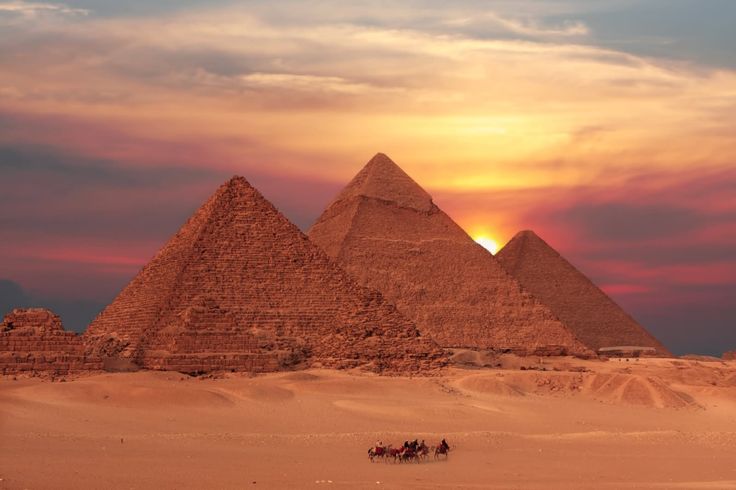🏛️ Top 7 Must-Visit Attractions in Luxor, Egypt: A Journey Through Ancient Egyptian Majesty
Luxor, often called the "World's Greatest Open-Air Museum," stands as a testament to ancient Egypt's grandeur and architectural genius. This magnificent city, once the capital of the New Kingdom, houses some of the most impressive monuments and temples ever built by human hands.
In this comprehensive guide, we take you through the 7 most essential attractions in Luxor that every traveler must experience. From the awe-inspiring Karnak Temple Complex to the mysterious Valley of the Kings, each site tells a story of pharaohs, gods, and the incredible civilization that shaped human history. Whether you're a history enthusiast, architecture lover, or simply seeking wonder, these ancient marvels will leave you spellbound.
1. Karnak Temple Complex

The Karnak Temple Complex is the largest religious building ever constructed, covering an area of over 200 acres. This magnificent complex was built over 2,000 years by generations of pharaohs, each adding their own contributions to create a masterpiece of ancient architecture.
The Great Hypostyle Hall, with its 134 massive columns reaching heights of 23 meters, is perhaps the most impressive feature. Walking through this forest of stone pillars, you'll feel the weight of history and the incredible engineering skills of the ancient Egyptians. The complex also features the sacred lake, obelisks, and numerous smaller temples dedicated to various deities.
What to see:
- Great Hypostyle Hall - 134 massive columns
- Sacred Lake - Used for religious ceremonies
- Obelisks - Including the famous Hatshepsut obelisk
- Precinct of Amun-Re - The main temple area
2. Valley of the Kings

The Valley of the Kings is the final resting place of Egypt's most powerful pharaohs, including the famous Tutankhamun. This remote valley in the Theban Hills contains over 60 royal tombs, each carved deep into the limestone cliffs and decorated with elaborate paintings and hieroglyphs.
The discovery of Tutankhamun's tomb by Howard Carter in 1922 remains one of archaeology's greatest moments. While most tombs were looted in antiquity, the treasures found in Tutankhamun's tomb gave us unprecedented insight into royal burial practices. The valley's isolation and the pharaohs' desire for eternal security created one of the most mysterious and fascinating archaeological sites in the world.
Must-visit tombs:
- Tutankhamun (KV62) - The most famous discovery
- Ramses VI (KV9) - Spectacular astronomical ceiling
- Seti I (KV17) - The longest and deepest tomb
- Thutmose III (KV34) - Unique architectural design
3. Luxor Temple

Luxor Temple, located in the heart of modern Luxor, is one of the most accessible and well-preserved ancient Egyptian temples. Built primarily by Amenhotep III and Ramses II, this temple was dedicated to the Theban Triad: Amun, Mut, and Khonsu.
The temple's location on the east bank of the Nile symbolizes the land of the living, and it was connected to Karnak Temple by the Avenue of Sphinxes. The temple complex includes a massive pylon, courtyards, colonnades, and sanctuaries. What makes Luxor Temple particularly special is its excellent state of preservation and the fact that it's beautifully illuminated at night, creating a magical atmosphere.
Highlights:
- Great Pylon - Massive entrance with Ramses II statues
- Colonnade of Amenhotep III - 14 papyrus columns
- Roman Chapel - Later addition showing historical layers
- Night illumination - Spectacular evening views
4. Temple of Hatshepsut (Deir el-Bahari)

The Temple of Hatshepsut at Deir el-Bahari is one of the most distinctive and beautiful temples in Egypt. Built for the female pharaoh Hatshepsut, this temple is dramatically carved into the limestone cliffs and features a unique three-tiered design that blends seamlessly with the natural landscape.
Hatshepsut's temple tells the story of her reign and her famous expedition to Punt (modern-day Somalia). The temple's reliefs depict the journey, including the exotic goods brought back to Egypt. The temple's architecture is revolutionary for its time, with ramps leading to different levels and colonnades that create a sense of grandeur and harmony with the surrounding cliffs.
Key features:
- Three-tiered design - Unique architectural style
- Punt reliefs - Famous expedition scenes
- Birth colonnade - Divine birth narrative
- Cliff integration - Natural landscape harmony
5. Colossi of Memnon

The Colossi of Memnon are two massive stone statues of Pharaoh Amenhotep III that have stood guard over the Theban necropolis for over 3,400 years. These impressive statues, each standing 18 meters tall and weighing approximately 720 tons, were originally part of a larger temple complex that has since disappeared.
The statues are famous for the "singing" phenomenon that occurred after an earthquake in 27 BC, when one of the statues would emit a musical sound at dawn. This was caused by the morning sun heating the stone, creating thermal expansion that produced the sound. The phenomenon stopped after the statue was repaired in the 3rd century AD, but the legend lives on.
Interesting facts:
- Height - 18 meters (60 feet) tall
- Weight - 720 tons each
- Age - Over 3,400 years old
- Singing phenomenon - Ancient acoustic mystery
6. Medinet Habu

Medinet Habu is the mortuary temple of Ramses III, one of Egypt's last great pharaohs. This well-preserved temple complex is often overlooked by tourists but offers some of the most impressive reliefs and architecture in Luxor. The temple served both as a place of worship and as a fortress, with massive walls and towers that protected it from invaders.
The temple's reliefs are particularly noteworthy, depicting Ramses III's military victories, including the famous battle against the Sea Peoples. The colorful paintings and detailed carvings provide valuable insights into ancient Egyptian warfare, daily life, and religious practices. The temple's excellent preservation makes it one of the best places to understand ancient Egyptian temple architecture and decoration.
Notable features:
- Military reliefs - Battle scenes and victories
- Colorful paintings - Well-preserved artwork
- Fortress design - Defensive architecture
- Royal palace - Connected residential complex
7. Ramesseum

The Ramesseum is the mortuary temple of Ramses II, one of Egypt's most famous and long-reigning pharaohs. Although now in ruins, this temple was once one of the most magnificent structures in ancient Egypt. The temple's grandeur was meant to reflect Ramses II's power and his divine status as a living god.
The temple is famous for the fallen colossus of Ramses II, which inspired Percy Bysshe Shelley's poem "Ozymandias." The massive statue, originally 17 meters tall, now lies broken on the ground, serving as a powerful symbol of the passage of time and the transience of human achievements. The temple's reliefs depict Ramses II's military campaigns, including the famous Battle of Kadesh.
Historical significance:
- Fallen colossus - Inspired "Ozymandias" poem
- Battle of Kadesh - Famous military reliefs
- Ramses II - One of Egypt's greatest pharaohs
- Mortuary temple - Royal burial complex
Ready to Explore Ancient Luxor?
These 7 magnificent attractions represent the pinnacle of ancient Egyptian architecture, art, and religious devotion. Each site offers a unique window into the world of the pharaohs, their beliefs, and their incredible achievements. From the massive scale of Karnak Temple to the intimate beauty of the Valley of the Kings, Luxor provides an unparalleled journey through human history.
Whether you're marveling at the engineering feats of the ancient Egyptians, deciphering the stories told in hieroglyphs, or simply soaking in the atmosphere of these sacred spaces, Luxor will leave you with memories that last a lifetime. The city's monuments stand as a testament to human creativity, ambition, and the eternal quest for immortality.
As the ancient Egyptians would say: "May your name live forever!"
